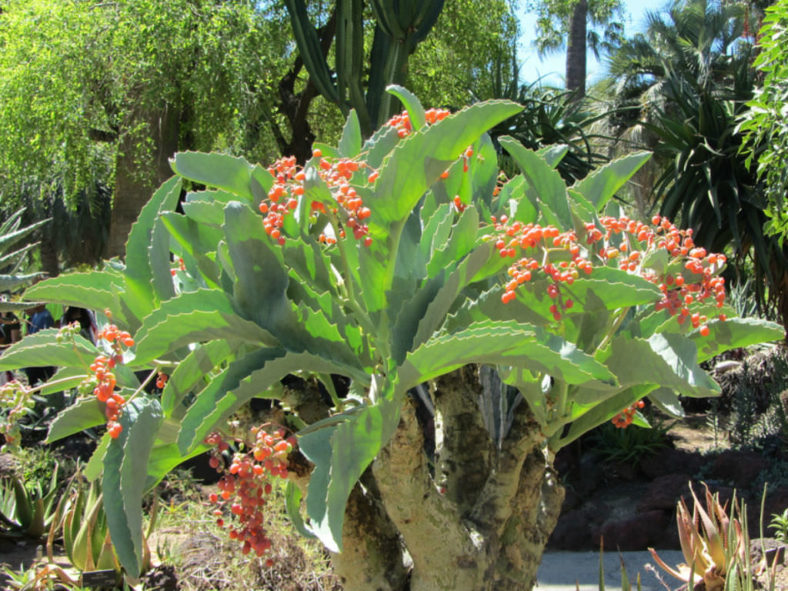Cyphostemma juttae, commonly known as Wild Grape, is a slow-growing succulent with a vast, swollen trunk. Due to its distribution, Wild Grape has evolved and adapted well to survive. The white, drooping, papery bark pieces on the yellow-green stems are characteristic of this species. In summer, they help reflect sunlight to keep the plant cool. The thick, fleshy stems and leaves act as water reservoirs during drought. A fully grown plant can reach a height of up to 6.67 feet (2 m). The leaves are large, ovate, fleshy, toothed, shiny, and fall off during winter.
Flowers are inconspicuous, but the large grape-like bunches of bright, wine-colored berries that appear near the end of summer make this succulent a true showpiece for container and garden alike.
Growing Conditions and General Care
Wild Grape is a very sought-after plant for the garden, as are other caudiciform plants such as Baobabs, Adeniums, and Tylecodons. It makes a superb container or open garden subject in and around the garden, especially around swimming pools and courtyards. Since this species primarily grows during the summer, it must be kept dry during the colder winter months. It is an ideal accent plant for a rock garden or when planted in a large container on a sun-protected patio.

Wild Grape grows best in loamy or sandy soil where drainage is optimal. Plenty of river sand and general compost will significantly improve drainage in heavy clay soils. Adding bone meal to the soil can dramatically enhance soil quality. Although smelly, the effect on soils is quite remarkable. As a rule of thumb, use only organic products, such as those based on seaweed extract, especially if the plant will be feed regularly. Organic products will not burn or damage plants.
As with all succulents, be careful not to overwater. This plant can survive with very little water, but it often dies due to excessive moisture. If you live in a very wet area, keeping your plant in large containers is preferable, as it allows for easy relocation to a sheltered place. This also helps in cases where severe frost occurs, as Cyphostemmas are not entirely frost-resistant.
The seeds of the Wild Grape can be sown in winter. Although they take a considerable time to germinate, success is almost guaranteed. Propagation can also be undertaken by cuttings. Cuttings or truncheons can be rooted in coarse river sand. Again, it is important to water carefully, especially after the cuttings have rooted.
Source: pza.sanbi.org
Links
- Back to genus Cyphostemma
- Succupedia: Browse succulents by Scientific Name, Common Name, Genus, Family, USDA Hardiness Zone, Origin, or cacti by Genus